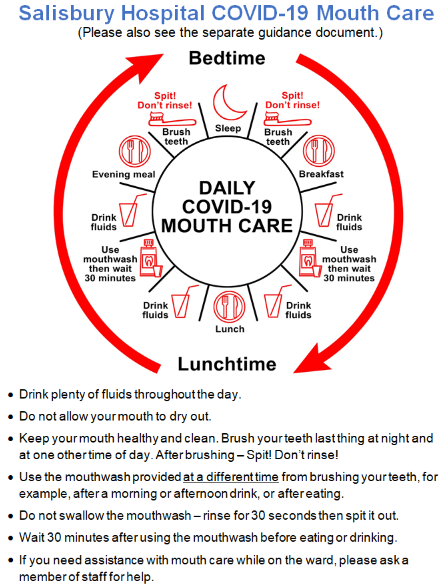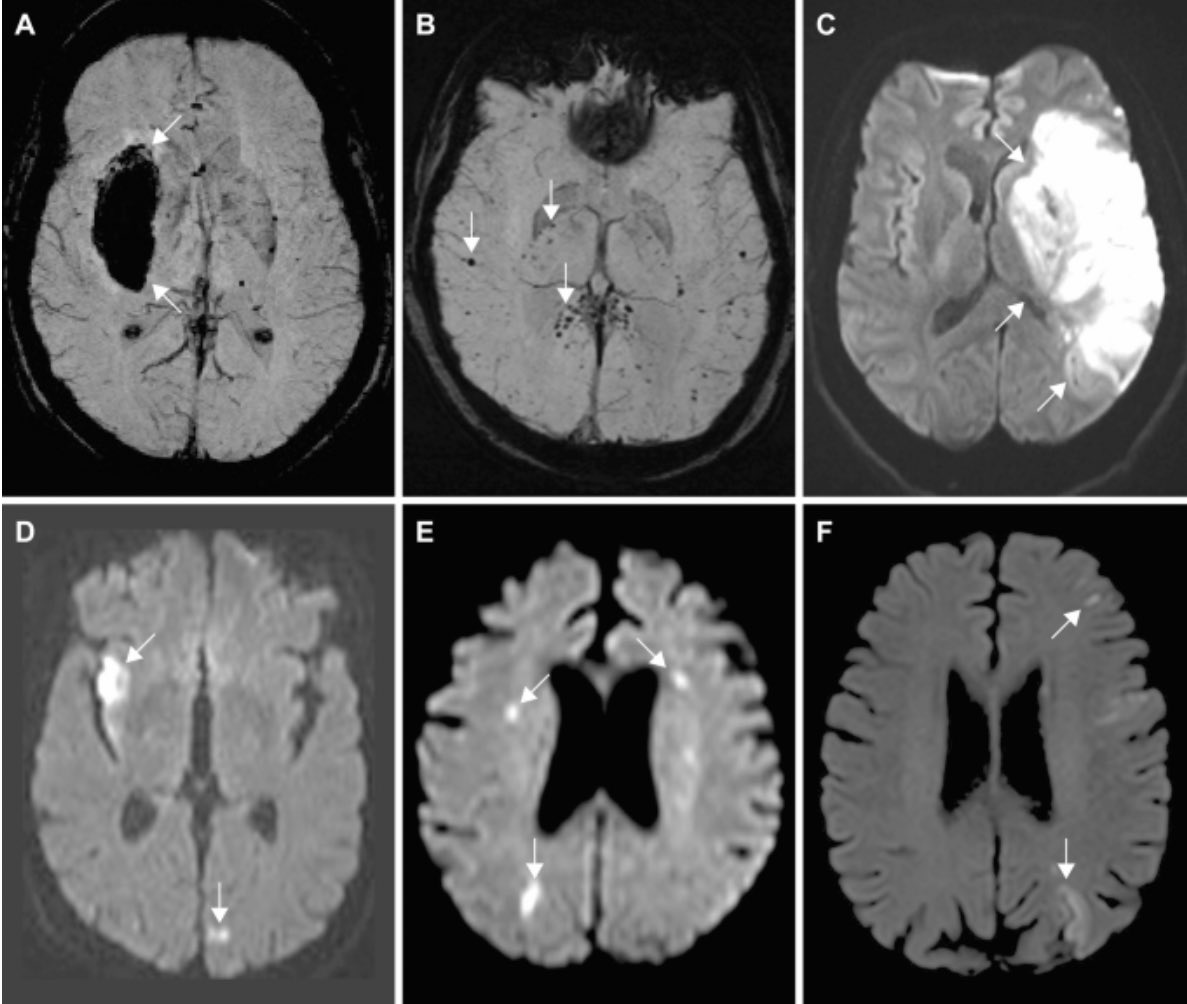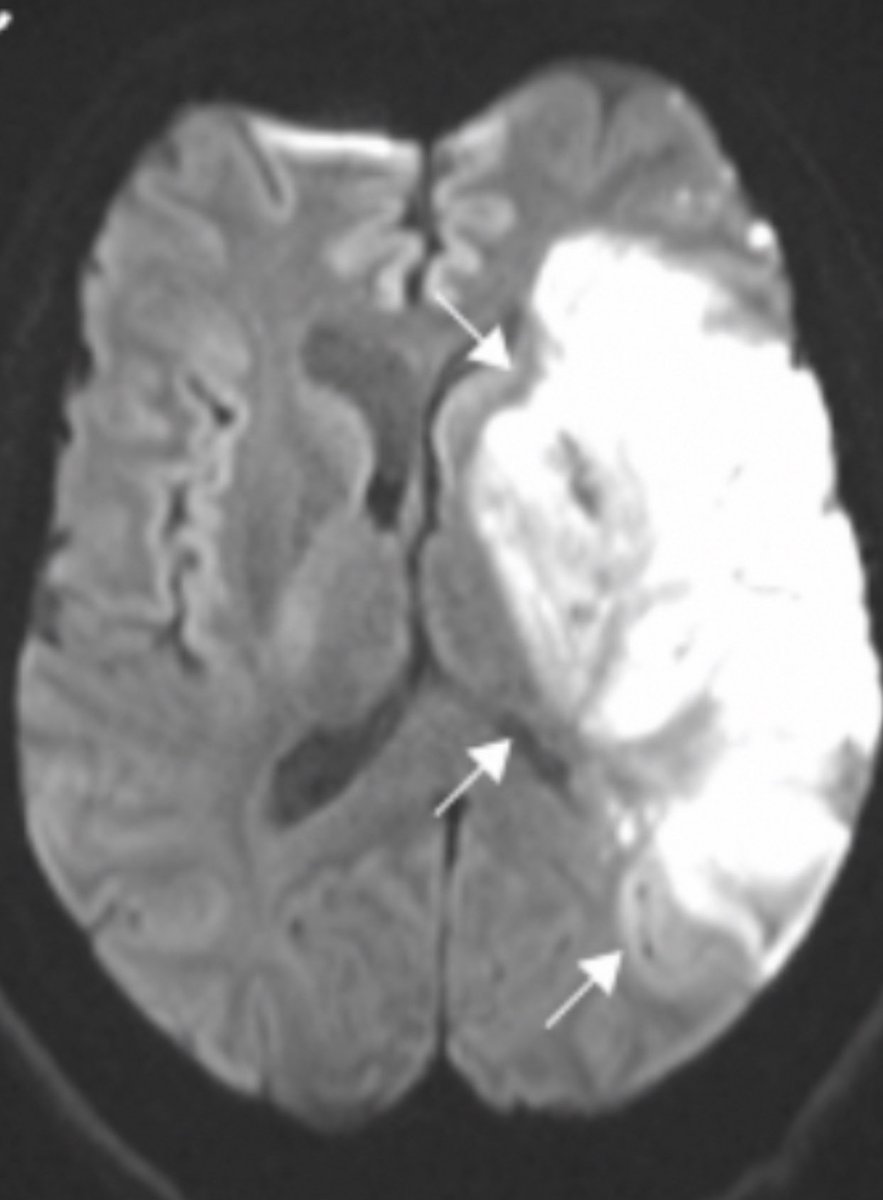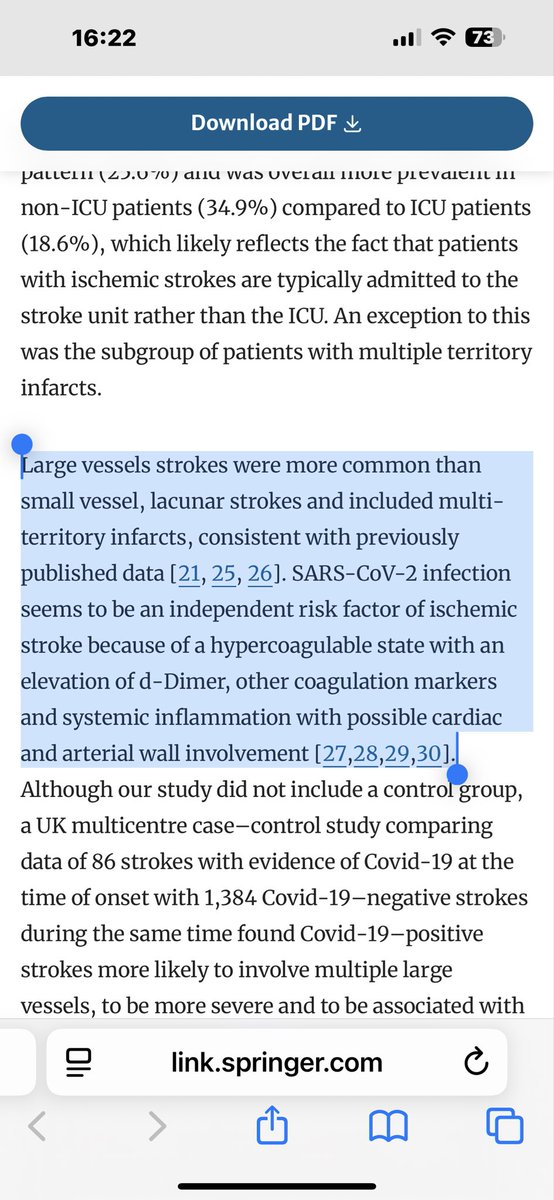1/
A thread to explain the reasons why it is important to care for the mouth if you have #COVID.
If you don't have time to read is all, here is the mouth care guidance (patient information sheet) we are providing our patients @SalisburyNHS ...
salisbury.nhs.uk/coronavirus/co…
A thread to explain the reasons why it is important to care for the mouth if you have #COVID.
If you don't have time to read is all, here is the mouth care guidance (patient information sheet) we are providing our patients @SalisburyNHS ...
salisbury.nhs.uk/coronavirus/co…

2/
... and this is a presentation giving more detail.
Highlights in thread below.
... and this is a presentation giving more detail.
Highlights in thread below.
3/
Here goes ...
The lung disease of COVID-19 is not a conventional respiratory 'pneumonia'. It is a 'pulmonary vasculopathy' - a disease of the lung blood vessels.
Here goes ...
The lung disease of COVID-19 is not a conventional respiratory 'pneumonia'. It is a 'pulmonary vasculopathy' - a disease of the lung blood vessels.
4/
This raises the question - 'How does the virus (or viral elements) reach the lung blood vessels?'
This raises the question - 'How does the virus (or viral elements) reach the lung blood vessels?'
5/
Yes, the virus is inhaled but it doesn't cause disease in the visible airways on CT scans.
Blood vessels are dominantly affected.
Areas of the lungs damaged are the least accessible to the airways (bottom, back, and sides of the lungs)
It is not flu! pubmed.ncbi.nlm.nih.gov/33634067/
Yes, the virus is inhaled but it doesn't cause disease in the visible airways on CT scans.
Blood vessels are dominantly affected.
Areas of the lungs damaged are the least accessible to the airways (bottom, back, and sides of the lungs)
It is not flu! pubmed.ncbi.nlm.nih.gov/33634067/
6/
All the medical imaging characteristics of the lung disease are vascular - clotting, dilated blood vessels, perfusion defects (reduced blood flow) - dominantly in a vascular, gravity-dependent distribution.
All the medical imaging characteristics of the lung disease are vascular - clotting, dilated blood vessels, perfusion defects (reduced blood flow) - dominantly in a vascular, gravity-dependent distribution.

7/
Could #SARS2 be arriving in the lungs via the bloodstream?
If so, what is the route?
The upper respiratory tract is the first site of infection, not the lungs. The ACE2 receptor is expressed x200-700 more intensely in the nose than in the lung airways
erj.ersjournals.com/content/56/3/2…
Could #SARS2 be arriving in the lungs via the bloodstream?
If so, what is the route?
The upper respiratory tract is the first site of infection, not the lungs. The ACE2 receptor is expressed x200-700 more intensely in the nose than in the lung airways
erj.ersjournals.com/content/56/3/2…
8/
The airways of the lungs do not express the ACE2 receptor with high intensity -
'ACE2 expression in the respiratory tract is limited, with none or low levels of ACE2 expression in lung and respiratory epithelia' - Hikmet et al
embopress.org/doi/full/10.15…
The airways of the lungs do not express the ACE2 receptor with high intensity -
'ACE2 expression in the respiratory tract is limited, with none or low levels of ACE2 expression in lung and respiratory epithelia' - Hikmet et al
embopress.org/doi/full/10.15…
9/
We know that multiple epithelial cell types in the mouth are highly susceptible to infection and replication (copying) of the virus.
nature.com/articles/s4159…
We know that multiple epithelial cell types in the mouth are highly susceptible to infection and replication (copying) of the virus.
nature.com/articles/s4159…
10/
The mouth is a viral 'factory' with levels of the virus in saliva reaching 100 million per ml. That's half a billion in a 5 ml teaspoon.
ncbi.nlm.nih.gov/pmc/articles/P…
The mouth is a viral 'factory' with levels of the virus in saliva reaching 100 million per ml. That's half a billion in a 5 ml teaspoon.
ncbi.nlm.nih.gov/pmc/articles/P…
11/
Also reported is a link between high viral load (concentration) in saliva and disease severity. High viral load in saliva is a better predictor of death than patient age. (This is independent of nasopharyngeal load).
(Preprint from Yale University.)
medrxiv.org/content/10.110…
Also reported is a link between high viral load (concentration) in saliva and disease severity. High viral load in saliva is a better predictor of death than patient age. (This is independent of nasopharyngeal load).
(Preprint from Yale University.)
medrxiv.org/content/10.110…
12/
A study showed that gum disease is linked to poor outcome in COVID-19 with an odds ratio for death of 8.81.
doi.org/10.1111/jcpe.1…
A study showed that gum disease is linked to poor outcome in COVID-19 with an odds ratio for death of 8.81.
doi.org/10.1111/jcpe.1…
13/
Hypothesis that the virus could escape the mouth - for example across bleeding gums - with direct delivery to the lungs via the bloodstream. The alveolar capillaries (small blood vessels in the lungs) is the first place the virus would reach.
bit.ly/36uEwar

Hypothesis that the virus could escape the mouth - for example across bleeding gums - with direct delivery to the lungs via the bloodstream. The alveolar capillaries (small blood vessels in the lungs) is the first place the virus would reach.
bit.ly/36uEwar

14/
The mouth is the most accessible place we can kill #SARS2.
How? By caring for our mouth with simple oral hygiene measures - such as toothbrushing and ...
The mouth is the most accessible place we can kill #SARS2.
How? By caring for our mouth with simple oral hygiene measures - such as toothbrushing and ...
15/
A study showing mouthwashes containing cetylpyridinium chloride (CPC) and ethyl lauryl arginate (ELA or LAE) completely eradicate the virus in the test tube and reduce viral load in saliva in the mouth.
(Other mouthwashes may have some affect also)
pubmed.ncbi.nlm.nih.gov/35436499/
A study showing mouthwashes containing cetylpyridinium chloride (CPC) and ethyl lauryl arginate (ELA or LAE) completely eradicate the virus in the test tube and reduce viral load in saliva in the mouth.
(Other mouthwashes may have some affect also)
pubmed.ncbi.nlm.nih.gov/35436499/
16/
Using a mouthwash which reduces viral load in the mouth, as a single measure in addition to standard care, reduces average COVID-19 length of hospital stay from 7 days to 4 days.
nature.com/articles/s4159…
Using a mouthwash which reduces viral load in the mouth, as a single measure in addition to standard care, reduces average COVID-19 length of hospital stay from 7 days to 4 days.
nature.com/articles/s4159…
17/
In summary, the mouth plays an important role in COVID-19 and there is something we can do about it.
There is good reason to suggest the mouth also plays a role in #longCOVID which is what I hope to investigate next.
In summary, the mouth plays an important role in COVID-19 and there is something we can do about it.
There is good reason to suggest the mouth also plays a role in #longCOVID which is what I hope to investigate next.
• • •
Missing some Tweet in this thread? You can try to
force a refresh















